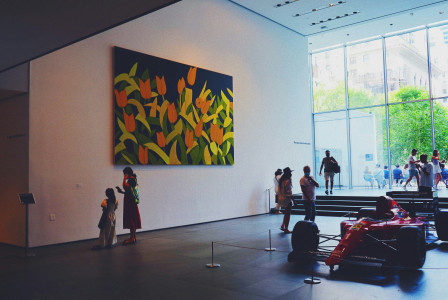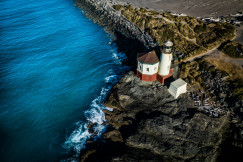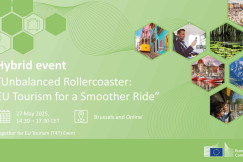Best practices
21 July 2025
BaMuR: Strengthening museum resilience in the Baltic Sea region
Best practices
21 July 2025
Cultural tourism
Best practices, peer learning and networking
Changes in tourism demand and opportunities
+5 more
Login / create an account to be able to react
-
4

The BaMuR project, completed in September 2024 and led by the Estonian War Museum, developed and tested practical tools to strengthen the crisis resilience of museums and cultural institutions across the Baltic Sea region.
Balteus Foundation
Estonian War Museum - General Laidoner Museum
Forum Marinum Foundation
Museum of Västervik
Public Institution National Regions Development Agency
Topics
Estonia
Finland
Lithuania
Poland
Sweden
Cultural and Heritage Organisations
Local Authorities
National authorities
NGOs / Non-profits
Regional Authorities
SMEs (a company with less than 250 employees)
-
Specific types of tourism
-
-
Cultural tourism
-
-
Transition Pathway Strategic Areas
-
-
Best practices, peer learning and networking
-
Changes in tourism demand and opportunities
-
Innovative tourism services
-
R&I on digital tools for tourism
-
Well-being of residents
-
-
Business activities
-
-
Museums
-
Operation of historical sites
-
Share
Completed in September 2024, the BaMuR project (Baltic Museum Resilience)—funded by the Interreg Baltic Sea Region Programme 2021–2027—was designed to enhance the crisis resilience of museums and cultural institutions. Coordinated by the Estonian War Museum – General Laidoner Museum, the initiative aimed to equip public authorities, NGOs, and SMEs with a practical toolkit to help cultural and heritage institutions maintain their role as sources of comfort and stability during times of crisis.
Over the course of 24 months, BaMuR piloted three innovative approaches: crowdsourcing, virtual exhibitions, and a collaborative financing model. These pilots helped refine and validate adaptable solutions that strengthen institutional preparedness and promote cross-sector collaboration across the Baltic Sea Region.
For further information on the project’s objectives, best practices, and outcomes, please refer to the link provided on the left-hand side of the platform.
#Resilience planning #Cultural preservation #Sustainable tourism #Innovation in tourism
Comments (0)
Related content
See also
Sustainable EU Tourism - Key challenges and best practices
- Categories
- Coastal, maritime and inland water tourism Cultural tourism Ecotourism +64 more
Lact call for registrations in Hybrid event "Unbalanced Rollercoaster - EU Tourism for a Smoother Ride"
- Categories
- Coastal, maritime and inland water tourism Cultural tourism Ecotourism +64 more
Register and join our discussion on latest developments and trends in EU tourism
- Categories
- Coastal, maritime and inland water tourism Cultural tourism Ecotourism +64 more






